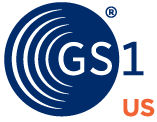Defining and understanding your target market audience is essential in today’s competitive retail world. For example, small consumer packaged goods (CPG) brands have thrived in recent years by targeting specific niche markets with unique needs such as dietary restrictions and environmental, social, and governance (ESG) values. According to the “CPG Growth Leaders” report from IRI and Boston Consulting Group (BCG), which spotlights top-performing CPG companies, small brands gained approximately four sales dollar share points from 2018 to 2022, going from a 20.4 share in 2018 to 24.6 in 2022. Meanwhile, large brands (greater than $6 billion in sales) lost approximately 3.7 share points over that same period.
Your business growth strategy should include a deep demographic analysis and detailed buyer personas and then align those findings with the retailers, distributors, foodservice operators, marketplaces, and other sales channels that can offer you lasting connections with your target market audience. To gain entrance into these types of business relationships, you will need a GS1-sourced barcode to ensure your products can be sold on a mass scale.
A properly set up UPC barcode is an important part of establishing yourself as a credible, legitimate global brand. Most retailers and marketplaces check the identification number from a UPC in the GS1® database to make sure your product is specifically linked to your brand, and not someone else’s. If the two don’t match, you may be rejected, or you might need to relabel your products—both will cost money and delay your company’s growth.







